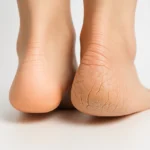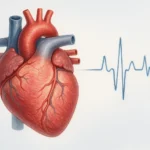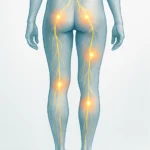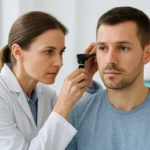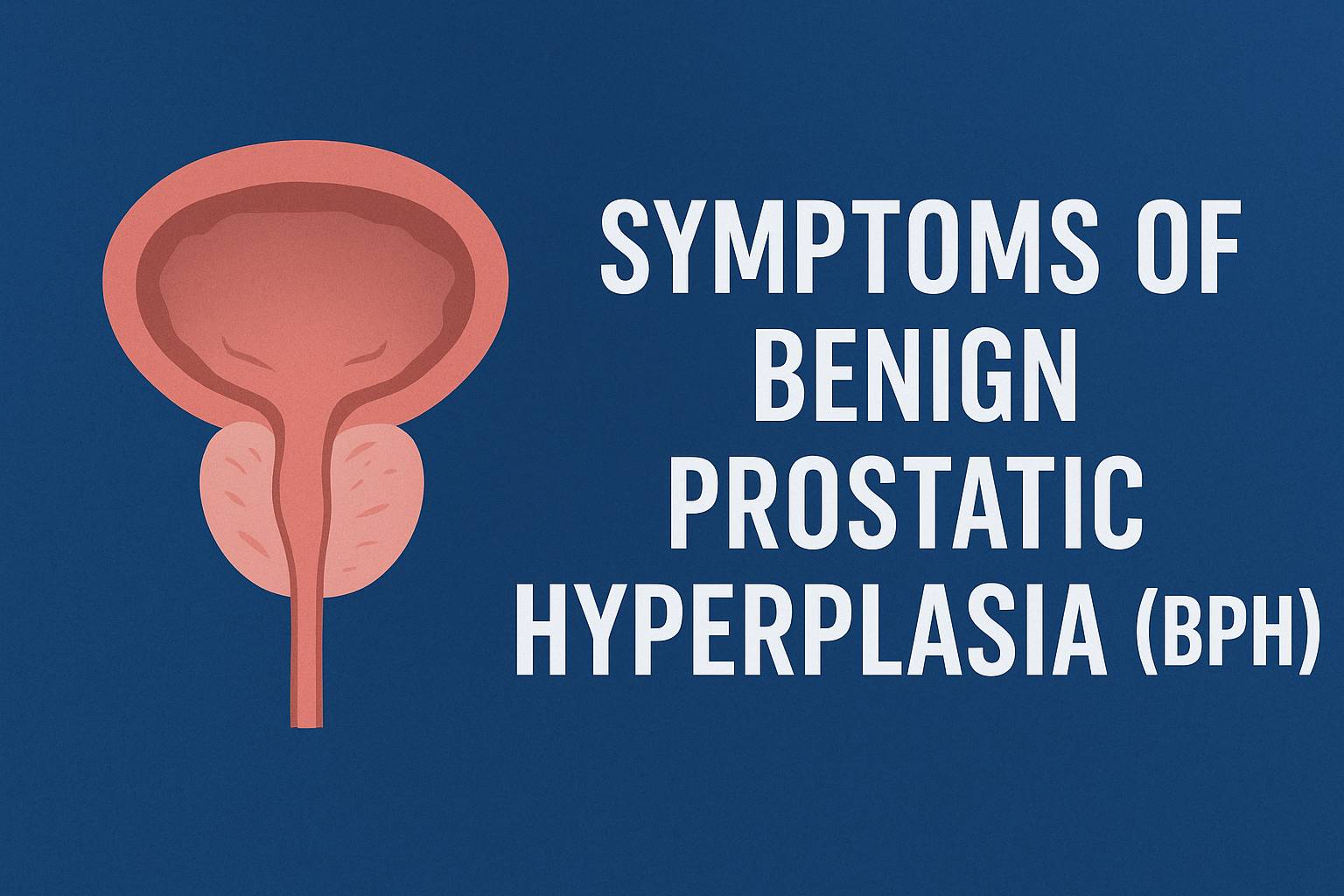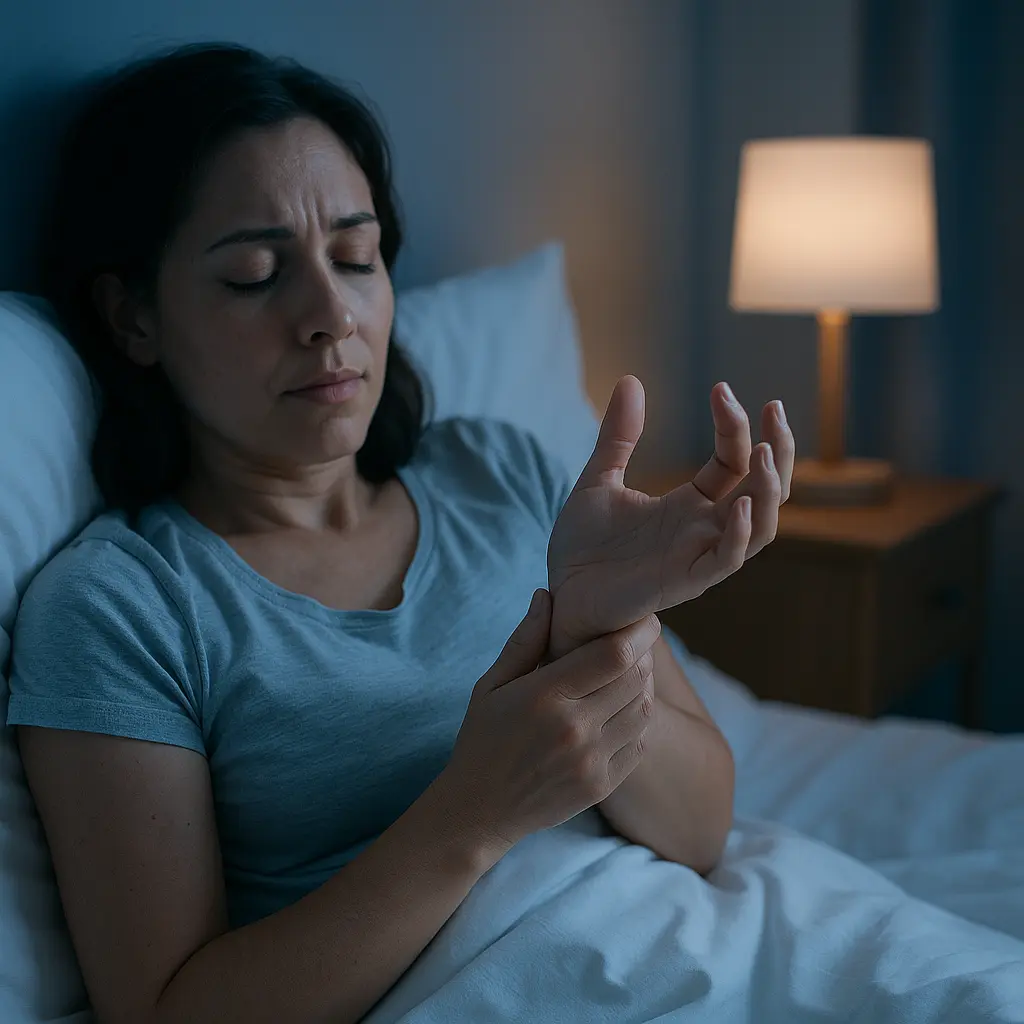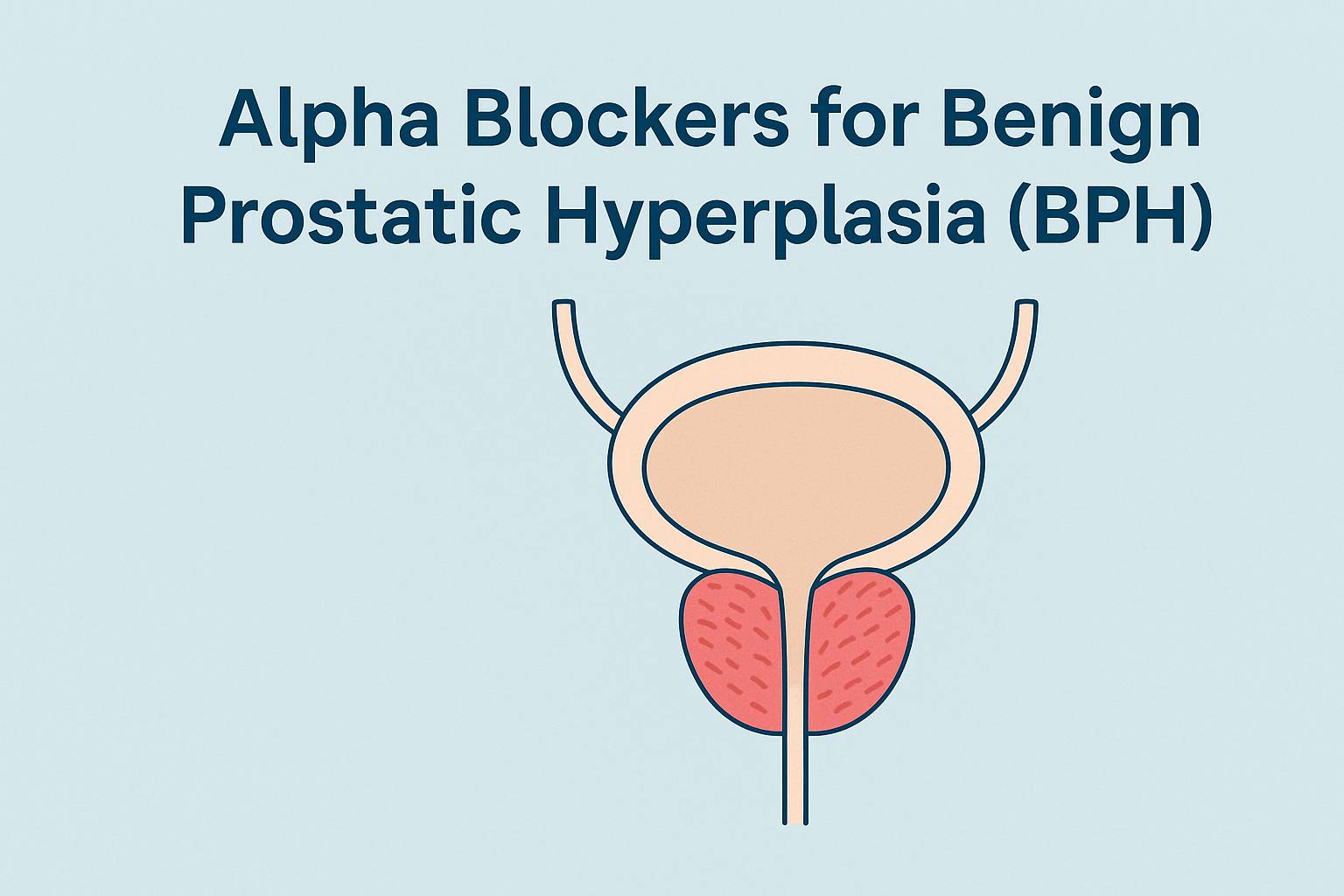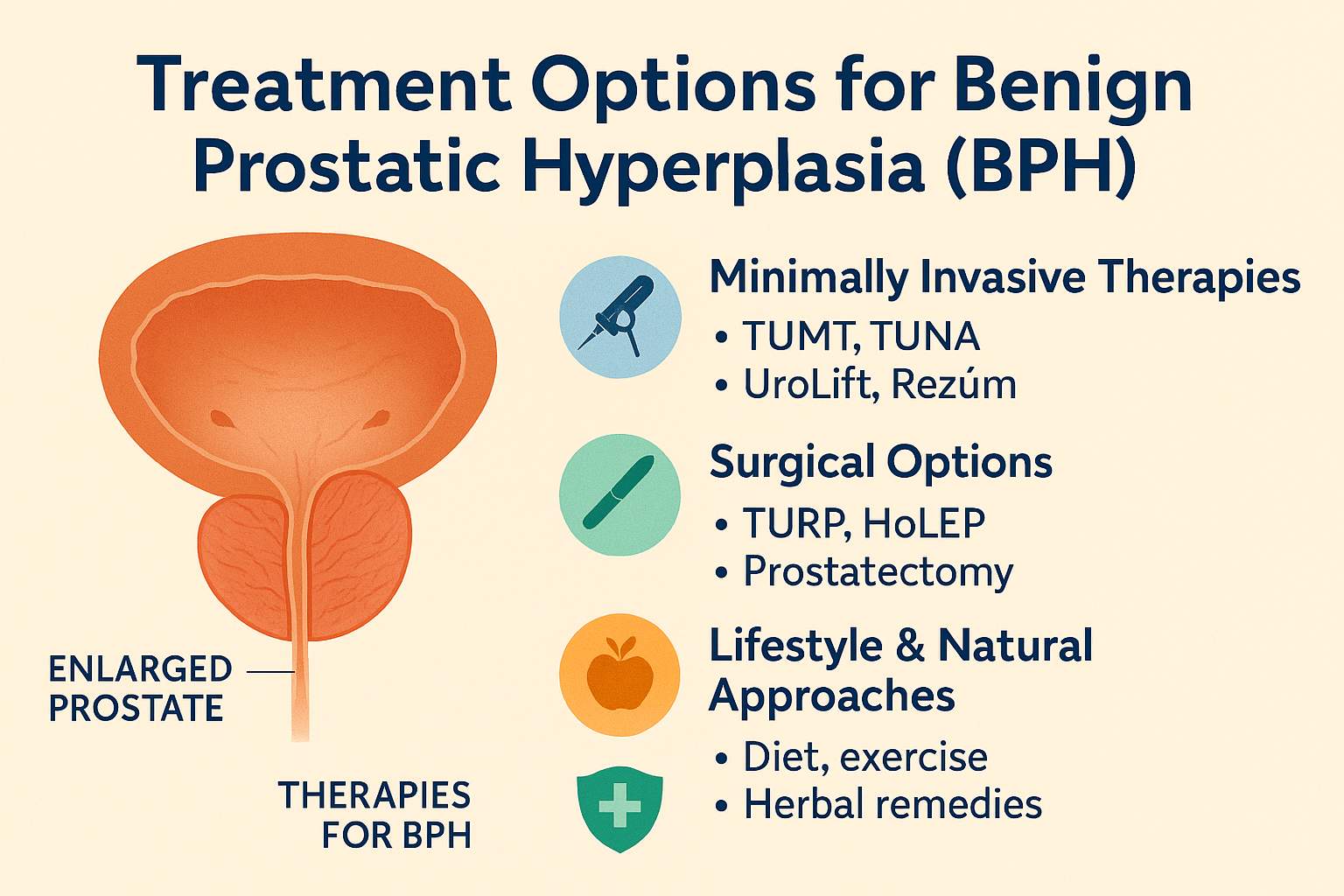
Symptoms of Benign Prostatic Hyperplasia (BPH)
“In my 12 years of medical practice, I have often seen men worried about changes in their urination. While many fear prostate cancer, most cases are related to benign prostatic hyperplasia (BPH) — a common, non-cancerous enlargement of the prostate. In this guide, I will explain the symptoms of an enlarged prostate, how they impact daily life, and when it is important to seek medical care.”
Benign prostatic hyperplasia (BPH) is a common condition that affects many men as they age. It refers to a non-cancerous enlargement of the prostate gland, which can press against the urethra and interfere with normal urination. While BPH is not life-threatening, its symptoms can significantly impact daily life and may cause anxiety for those who experience them. Recognizing the early warning signs helps men seek timely medical care, improve quality of life, and prevent complications such as urinary retention or bladder damage.
Why Recognizing BPH Symptoms Matters
Noticing the early signs of benign prostatic hyperplasia (BPH) is more than just identifying a minor health issue. Timely recognition helps men understand what is happening with their bodies, reduces unnecessary fear about prostate cancer, and allows doctors to prevent serious complications before they develop.
Early detection and prevention of complications
Early detection gives doctors the chance to act before the condition progresses. When BPH is diagnosed at an early stage, treatment options are usually simpler and more effective, ranging from lifestyle changes to mild medication. This proactive approach can prevent the development of severe problems such as urinary retention, bladder stones, or kidney damage.
In my clinical experience, men often delay seeking help because they think urinary issues are just part of getting older. Unfortunately, postponing medical attention can allow symptoms to worsen. By recognizing benign prostatic hyperplasia symptoms early, patients protect not only their bladder health but also their overall well-being.
How symptoms of an enlarged prostate affect daily life
Even when not severe, enlarged prostate signs can disrupt a man’s daily routine. Frequent trips to the bathroom, waking up several times at night, and difficulty emptying the bladder can disturb sleep, reduce productivity, and increase stress. Many men also feel embarrassed about their symptoms, which may limit social activities and lower quality of life.
As a physician, I have seen how these urinary symptoms in men can gradually erode confidence. Something as simple as planning a car ride or attending a meeting becomes stressful if one constantly worries about finding a restroom. Understanding these challenges highlights why paying attention to BPH symptoms is essential for both physical and emotional health.
Common Urinary Symptoms of Enlarged Prostate (BPH)
The most noticeable signs of an enlarged prostate often involve changes in urination. These urinary symptoms in men may develop slowly, but over time they become hard to ignore. Recognizing them early helps to separate normal aging from benign prostatic hyperplasia symptoms that require medical attention.
Frequent urination during the day
One of the earliest and most common signs is the need to urinate more often than usual. The enlarged prostate presses on the urethra, reducing bladder capacity and creating a sensation that it must be emptied frequently. For many men, this becomes disruptive at work, during travel, or in social situations.
In my practice, I have met patients who organized their daily schedule around restroom access. While they thought it was simply part of aging, this change was actually a direct result of BPH. Once identified and treated, many were relieved to regain control of their routine.
Nocturia (waking up at night to urinate)
Nocturia is another key symptom. Men with BPH often wake up multiple times during the night to urinate, which leads to interrupted sleep and daytime fatigue. Poor rest increases irritability, reduces concentration, and over time affects overall health.
This nightly disruption is not just inconvenient — it can also signal that the bladder is under stress from constant pressure. In severe cases, untreated nocturia may contribute to higher risks of cardiovascular strain due to chronic sleep loss. Recognizing it as an early warning sign allows men to address the issue before complications arise.
Weak urine stream and difficulty starting
A weak or hesitant urine stream occurs when the enlarged prostate narrows the urethra. Many men describe straining at the beginning of urination or noticing that the flow is weaker than before. These changes are frustrating and can cause embarrassment in public restrooms.
From a clinical perspective, this symptom reflects a mechanical blockage. The bladder must work harder to push urine through, which over time can lead to bladder muscle fatigue. Addressing this early prevents further damage and restores normal function.
Feeling of incomplete bladder emptying
Men with BPH often report that even after urinating, they still feel as if the bladder is not fully empty. This sensation may cause repeated trips to the bathroom within a short time. It is one of the more distressing enlarged prostate signs because it creates constant discomfort.
When the bladder cannot empty completely, urine remains trapped inside, which increases the risk of infection and bladder stones. Patients who recognize this symptom and discuss it with their doctor early can avoid these complications through appropriate treatment.
Other Possible Symptoms of BPH
Not every man with benign prostatic hyperplasia experiences the same set of complaints. Beyond the common urinary changes, there are additional symptoms that may appear and interfere with daily life. These signs often point to the growing impact of the enlarged prostate on bladder control and comfort.
Urgency and sudden need to urinate
Many patients describe a strong, sudden urge to urinate that comes without warning. This urgency can be difficult to control and sometimes results in accidental leakage if a restroom is not immediately available. It often creates stress when leaving home, attending events, or traveling.
In clinical settings, urgency is considered one of the more bothersome lower urinary tract symptoms (LUTS). It reflects how the bladder muscles overreact in response to obstruction from the prostate. Managing this symptom early helps restore confidence and reduces the risk of embarrassing situations.
Dribbling at the end of urination
Another common complaint is post-void dribbling, or the leakage of a few drops of urine after finishing. While it may seem minor, men often find it uncomfortable, inconvenient, and socially awkward. It can also lead to skin irritation if frequent.
This symptom occurs because the narrowed urethra prevents complete emptying in a single flow. As a result, small amounts of urine remain and escape after standing up. Identifying this sign as part of enlarged prostate symptoms allows doctors to provide strategies that improve control.
Discomfort or pressure when the bladder is full
Some men with BPH feel a sense of pressure or discomfort when their bladder fills. This is not always painful, but it signals that the bladder is struggling to adapt to the extra resistance caused by the prostate. Patients may describe it as heaviness or tightness in the lower abdomen.
From a medical perspective, this pressure is a warning that the bladder wall is working harder than normal. Over time, such stress can weaken the bladder muscle. Recognizing and addressing this early ensures better long-term urinary function.
How BPH Symptoms Differ From Other Conditions
Urinary problems are not unique to benign prostatic hyperplasia. Other conditions can cause similar signs, which is why men often worry when they notice changes. Understanding the differences helps reduce fear and ensures that the right diagnosis is made.
Distinguishing BPH from prostate cancer
BPH and prostate cancer can share symptoms such as weak urine stream or frequent urination. However, BPH is a non-cancerous condition, while prostate cancer may also involve weight loss, bone pain, or blood in the urine. Most cases of urinary difficulty in older men are linked to BPH, not cancer.
In my practice, I often reassure patients that enlarged prostate signs are common and usually benign. Still, any sudden change in urination or the appearance of blood requires prompt medical evaluation to rule out cancer.
Similarities with urinary tract infections (UTIs)
Some men with BPH report burning, urgency, or discomfort that resembles a urinary tract infection. UTIs are less common in men, but they can appear if the bladder does not empty fully and bacteria multiply in the remaining urine. This overlap can make diagnosis confusing.
Doctors use urine tests to distinguish between infection and BPH. While antibiotics resolve UTIs, they do not improve BPH symptoms. Recognizing this difference prevents unnecessary treatments and helps men get the care they need.
Lower urinary tract symptoms (LUTS) and overlapping conditions
The term lower urinary tract symptoms (LUTS) includes a wide range of complaints — from frequent urination to urgency and weak stream. BPH is the most common cause of LUTS in older men, but bladder disorders, neurological conditions, or even certain medications can produce similar effects.
Because LUTS are not specific to one disease, evaluation by a urologist is important. Tests such as ultrasound or flow measurement clarify whether BPH is the main issue or if another condition is involved. Early clarification ensures that treatment is targeted and effective.
Assessing the Severity of Symptoms
Not all benign prostatic hyperplasia symptoms affect men in the same way. Some only cause minor inconvenience, while others disrupt sleep, work, and social life. Doctors use structured tools to measure severity and guide treatment decisions.
International Prostate Symptom Score (IPSS)
The International Prostate Symptom Score (IPSS) is a widely used questionnaire that helps quantify urinary symptoms in men. It asks about frequency, urgency, weak stream, and nocturia, with answers scored from 0 (not at all) to 5 (almost always). The total score gives a clear picture of how much BPH affects daily life.
In clinical practice, the IPSS helps track changes over time. A patient may complete the questionnaire every few months, allowing the doctor to adjust treatment if symptoms progress. This makes the IPSS a valuable tool not only for diagnosis but also for monitoring.
Categories: mild, moderate, and severe
Based on the IPSS, symptoms are grouped into categories: mild (0–7 points), moderate (8–19 points), and severe (20–35 points). Men with mild scores may only need lifestyle advice, while those with higher scores often benefit from medication or minimally invasive therapy.
This classification allows for tailored care. For example, two men with BPH may have similar enlarged prostate signs, but one might function well with reassurance while the other requires active treatment. Using categories prevents both under-treatment and over-treatment.
Patient self-assessment and long-term monitoring
Self-assessment is an important part of managing BPH. Patients who keep track of their urinary habits notice changes earlier and can share accurate details with their doctor. This helps avoid delays in care and strengthens the partnership between patient and physician.
Long-term monitoring matters because BPH is a progressive condition. Even if symptoms are mild today, they can worsen over time. Regular check-ups and repeated use of tools like the IPSS ensure that treatment remains effective and that complications are prevented.
When to See a Doctor About BPH Symptoms
Many men hesitate to talk about urinary problems, assuming they are just a normal part of aging. While some symptoms are mild, others require prompt attention. Knowing when to seek medical care helps prevent complications and ensures peace of mind.
Warning signs that require immediate care
Certain symptoms should never be ignored. These include blood in the urine, sudden inability to urinate, severe pain in the lower abdomen, or fever with urinary problems. These signs may indicate infection, bladder stones, or even more serious conditions.
As a physician, I always advise patients to treat these red flags as urgent. Quick evaluation and treatment can prevent kidney damage or other long-term health issues.
Risks of delaying treatment
Ignoring benign prostatic hyperplasia symptoms may seem harmless at first, but over time the consequences can be serious. Untreated BPH can lead to bladder muscle weakness, recurrent infections, or permanent kidney problems.
I have seen men who postponed care until their bladder could no longer empty at all, requiring emergency catheterization. Addressing symptoms early avoids such outcomes and keeps treatment options simple.
Importance of routine urological check-ups
Even when symptoms are mild, regular check-ups with a urologist are important. Routine visits allow doctors to track progression, adjust therapy, and screen for other prostate conditions. This is especially valuable for men over 50 or those with a family history of prostate disease.
Consistent follow-up builds confidence and helps men stay proactive about their health. A short annual visit often prevents years of discomfort and reduces the risk of unexpected emergencies.
FAQ About BPH Symptoms
Conclusion
Benign prostatic hyperplasia (BPH) is not life-threatening, but its symptoms can have a major impact on daily life. Recognizing frequent urination, nocturia, weak stream, or the feeling of incomplete emptying allows men to seek care before complications develop.
Early evaluation by a doctor makes treatment simpler and more effective. Whether symptoms are mild or severe, professional guidance helps men protect bladder and kidney health, sleep better, and regain quality of life.
If you notice persistent urinary symptoms, do not ignore them — schedule a consultation with your urologist.
